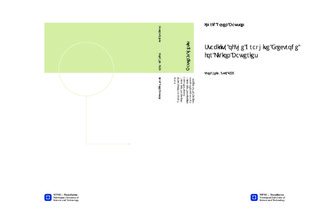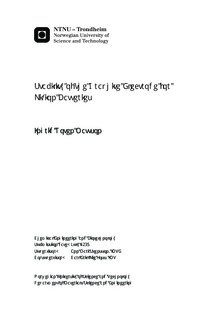| dc.contributor.advisor | Svensson, Ann Mari | nb_NO |
| dc.contributor.advisor | Foss, Carl Erik Lie | nb_NO |
| dc.contributor.author | Mattson, Ingrid Roten | nb_NO |
| dc.date.accessioned | 2014-12-19T13:27:37Z | |
| dc.date.available | 2014-12-19T13:27:37Z | |
| dc.date.created | 2013-09-24 | nb_NO |
| dc.date.issued | 2013 | nb_NO |
| dc.identifier | 651217 | nb_NO |
| dc.identifier | ntnudaim:9892 | nb_NO |
| dc.identifier.uri | http://hdl.handle.net/11250/249376 | |
| dc.description.abstract | This thesis has focused on the characterization of two different graphite materials, in order to gain an improved understanding of how composition of the electrolyte and cycling of the battery influences the stability of the graphite electrode. The effect of the amount of the electrolyte solvent ethyl carbonate was emphasized. In addition, the thermal stability of the electrodes have been investigated by differential scanning calorimetry. Basic characterisations of the materials were conducted, among them scanning electron microscopy investigations, particle size distribution measurements and nitrogen adsorption measurements. Battery test cells was manufactured and cycled at different rates for 52 cycles to reveal the electrochemical performance of the materials and electrolytes. Electrochemical impedance spectroscopy was utilized to reveal possible degradation mechanisms causing capacity fade of the graphite electrodes. It was found that the moderate cycled Elkem A2 (2650) graphite had the best retained capacity after 52 cycles. The electrolyte with the highest amount of ethyl carbonate (40 %) was found to create a stable SEI layer, as evidenced by electrochemical impedance spectroscopy. The capacity fade of the graphite electrodes was found to be due to increased electrolyte resistance and contact resistance and to an increased charge transfer resistance. The Elkem graphite showed the best thermal stability due to its higher amount of non basal plane to basal plane surface areas. | nb_NO |
| dc.language | eng | nb_NO |
| dc.publisher | Institutt for materialteknologi | nb_NO |
| dc.title | Stability of the Graphite Electrode for Li-ion Batteries | nb_NO |
| dc.type | Master thesis | nb_NO |
| dc.source.pagenumber | 83 | nb_NO |
| dc.contributor.department | Norges teknisk-naturvitenskapelige universitet, Fakultet for naturvitenskap og teknologi, Institutt for materialteknologi | nb_NO |

